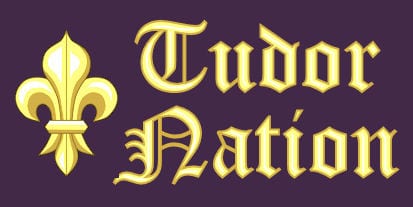The early sixteenth century (1500 – 1550) in Europe was a period of significant conflict and rivalry, driven by both political ambitions, dynastic rivalries and religious changes. The most important European conflicts and rivalries of the early 16th century include:
The Italian Wars 1494-1559
Anglo-French Wars 1511-1546
Anglo-Scottish Wars 1513-1551
Protestant Reformation 1517 onwards
Ottoman-Hapsburg Wars 1526-1547
The Italian Wars (1494–1559)
The Italian Wars were a series of conflicts involving France, Spain, the Holy Roman Empire, and the Papal States. Fuelled by the dynastic rivalry between the Hapsburgs (Charles V, King of Spain and Holy Roman Emperor) and the Valois dynasty (Francis I of France), both leaders sought dominance over the Italian peninsula. The major phases of the wars were:
1494 – Invasion of Italy – King Charles VIII of France invaded Italy seeking to claim Naples. His successors, Louis XII and Francis I, continued to pursue territorial claims in Italy, particularly in Milan and Naples. Spain, under Ferdinand of Aragon and later Holy Roman Emperor Charles V opposed French influence.
1515 – Battle of Marignano – French forces under King Francis I defeated the Swiss, solidifying control over Milan.
1525 – Battle of Pavia – A significant turning point where the French were decisively defeated by the forces of Charles V, leading to the capture of Francis I.
1527 – Sack of Rome – The troops of Charles V sacked Rome in a brutal assault that shocked the rest of Europe. The event marked the decline of the Independence of the Papal States.
1559 – Treaty of Cateau-Cambresis – This treaty brought the Italian Wars to a close with Spain dominating much of Italy.
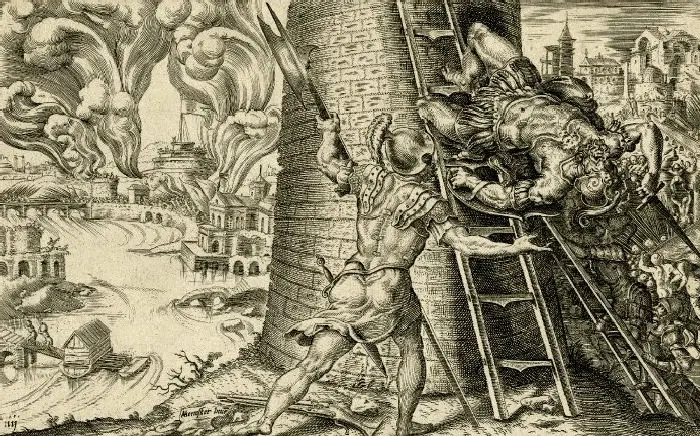
The Anglo-French Wars (1511 – 1546)
King Henry VIII wanted to assert England’s status as a major European power. To do this he variously supported Spain against France or France against Spain. England fought three wars against France:
1511 – 1514 – War of the League of Cambrai – As part of the Italian Wars, Pope Julius II called for a Holy League against France. Henry saw joining the League as a means to invade France in 1513. The English army succeeded in defeating the French at the Battle of the Spurs and gaining control of Tournai and Therouanne.
1522 – 1526 – Second Anglo-French War – Conflict in Italy had broken out again in 1521. The following year Henry VIII allied with Charles V and the Pope against France. A second invasion of France aimed to push south and capture Paris, however, the promised support from Charles did not arrive and the English did little more than raid and pillage areas of northern France. In 1526 agreement was reached with France at the Treaty of Hampton Court.
1543 – 1546 – Third Anglo-French War – Once again Henry VIII took advantage of conflict between Charles V and Francis I, joined forces with Charles and invaded France in 1544. However, Charles went back on his promise of support again and allied with France. In 1545 an attempted French invasion was held off by the English at the Battle of the Solent but was marked by the loss of the Mary Rose which sank. The English continued alone in France but the war resulted in stalemate.
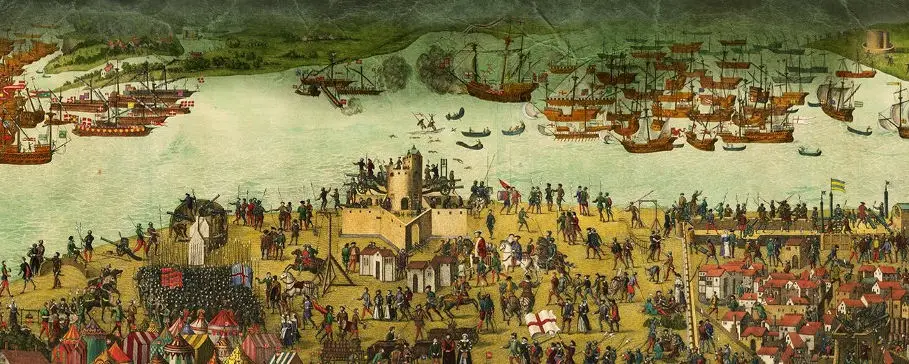
The Anglo-Scottish Wars 1513 – 1551
The existence of the Auld Alliance, a treaty of mutual support between Scotland and France, meant that conflict with France also meant conflict with Scotland and vice versa. The key conflicts between England and Scotland were:
1513 – Battle of Flodden Field – After Henry VIII invaded France in 1513, King James IV of Scotland invaded England in support of France. The Scots were defeated at the Battle of Flodden Field and King James IV and many leading Scottish nobles were killed. This weakened Scotland as James IV was succeeded by his infant son.
1542 – Battle of Solway Moss – Relations between England and Scotland had worsened during the 1530s due to the Anglican Reformation in England and Scotland’s refusal to follow suit. The death of Henry’s sister Margaret, mother of King James V, led to a breakdown between the two countries in 1541. English and Scottish forces met at Solway Moss in November 1542 where the Scots were defeated. Although James V was not at the Battle, his death in December of that year once again left Scotland weak as he was succeeded by his six-week old daughter Mary.
1543 – 1551 – Rough Wooing – After James V of Scotland’s death, Henry VIII attempted to secure a marriage alliance between his son Edward and Mary, Queen of Scots, to bring Scotland under English influence. When negotiations failed, Henry resorted to a campaign of military pressure to try to force Scotland to agree the marriage. Mary eventually married the French Dauphin in 1558.
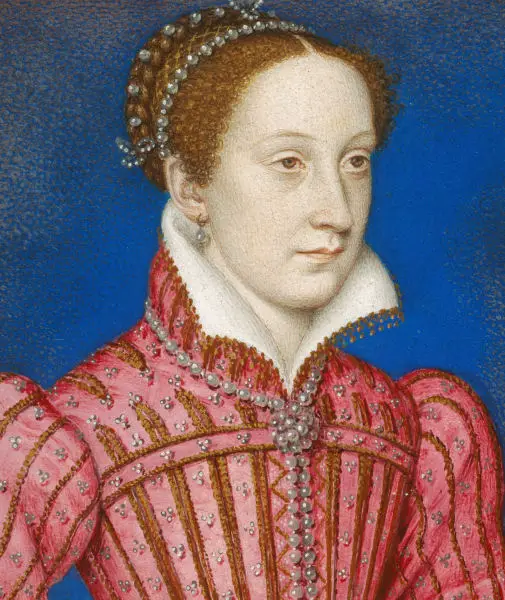
The Protestant Reformation 1517 onwards
The Protestant Reformation began in 1517 after Martin Luther famously nailed his 95 Theses to a church door in Wittenberg, Germany. This religious reform movement led to the fragmentation of the established western Church and the creation of divisions within Europe, particularly in the Holy Roman Empire. Major conflicts during this period include:
1524 – 1525 Peasants’ War in Germany – Inspired by the Reformation, German peasants sought greater freedom from their noble overlords. However, they were defeated by the aristocracy and many lost their lives.
1534 – English Reformation – The Pope’s refusal to grant Henry VIII a divorce from Catherine of Aragon, led to Henry severing ties with Rome and forming the Anglican Church of England. This move isolated and created further tensions between England and France and England and Spain / Holy Roman Empire. It also increased tensions in England between Protestants and Catholics.
1536 – Pilgrimage of Grace – This was the largest popular uprising in Tudor England. It took place predominantly in northern England, in response to Henry’s dissolution of the monasteries and seizure of church lands. The uprising was brutally crushed but religious tensions continued for generations.
1546 – 1547 – The Schmalkaldic War – The Protestant Reformation led to religious divisions within the Holy Roman Empire. Protestant German princes formed the Schmalkaldic League to defend their religious and political interests against Emperor Charles V, who sought to maintain Catholic unity. The Protestant force was defeated at the Battle of Mühlberg in 1547. However, Protestantism continued to grow in Germany, leading to further conflict later.
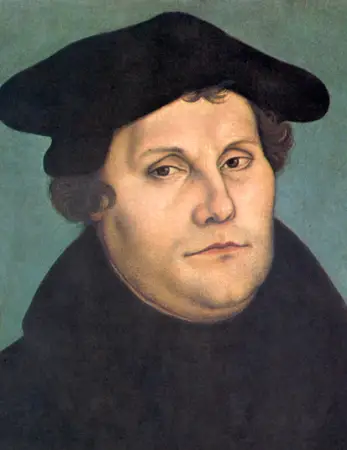
The Ottoman-Habsburg Wars 1526–1547
Suleiman the Magnificent sought to expand the Ottoman Empire into eastern Europe. The conflict was fuelled by both territorial ambitions and religious differences between the Muslim Ottomans and the Christian Habsburgs. The major conflicts were:
1526 – Battle of Mohács – Ottoman forces defeated the Hungarian army led by King Louis II. Following the battle, Hungary was divided between the Ottoman Empire, the Habsburg Empire and Transylvania.
1529 – Siege of Vienna – Having pushed west, the Ottoman army laid siege to Vienna. However the city of Vienna held out and the Ottomans were forced to break the siege and withdraw.
1530 – 1547 – Little War in Hungary – this was a series of clashes over 17 years between the Habsburgs and Ottomans for control of Hungary. The ongoing conflict established a long-lasting frontier between the Habsburg and Ottoman empires.
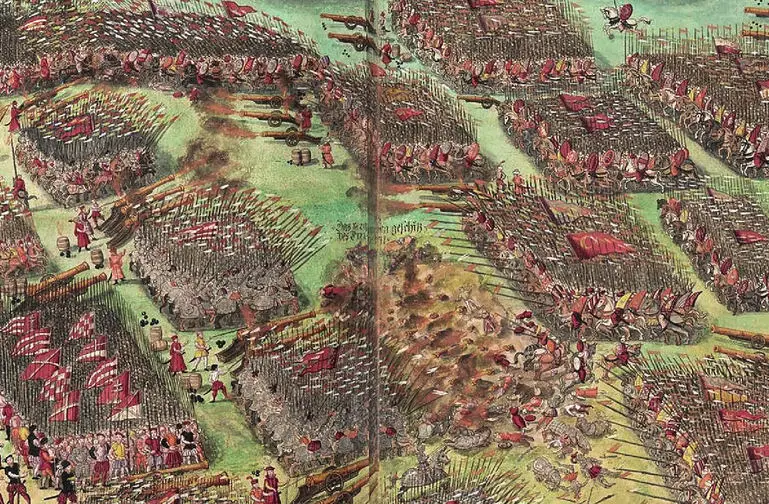
Conclusion
Europe, in the early sixteenth century, was marked by a complex web of dynastic, territorial, and religious rivalries. The Habsburg-Valois rivalry, the rise of the Ottoman Empire, and the Protestant Reformation were among the most significant forces shaping European conflicts during this period. These conflicts set the stage for the religious wars and political realignments that would dominate European history in the following decades.
Henry VIII’s attempts to assert English dominance both in the British Isles and on the continent resulted in limited gains. The costs of foreign campaigns and religious upheaval at home shifted Henry’s focus inward and affected England’s position on the European political stage.
Published September 12, 2024 – Updated – September 12 2024
Harvard Reference for this page:
Heather Y Wheeler. (2024 – 2025). Major European Conflicts early 16th Century (1500-1550) Available: https://www.tudornation.com/major-european-conflicts-early-16th-century Last accessed April 15th, 2025
